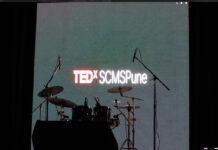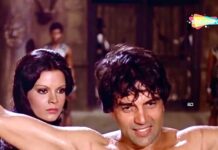The internet’s fascination with categorizing attractiveness has taken a new turn with the emergence of “hot rodent men.” This trend, highlighted by a mix of media articles and social media posts, introduces a new archetype of unconventionally attractive men characterized by rodent-like features.
The phenomenon has sparked both interest and controversy, reflecting broader patterns in how beauty standards are defined and discussed online.
The Rise of the “Hot Rodent Men”
“Hot rodent men” are gaining attention for their angular facial structures, beady eyes, and untidy hair, often complemented by a lanky build. These attributes diverge from the typical Hollywood heartthrob image, offering a fresh take on male attractiveness.
Actors like Timothée Chalamet, Jeremy Allen White, Barry Keoghan, Mike Faist, Josh O’Connor, and Matty Healy are frequently cited as epitomizing this trend.
The concept gained significant traction following the April release of “Challengers,” featuring Mike Faist and Josh O’Connor. The film’s love triangle storyline led to online discussions comparing the actors to cartoon mice.
One viral X post described O’Connor as resembling “a very kindhearted mouse who got turned into a prince,” and another suggested Faist is what Stuart Little would look like “if he was human and hot.” These comparisons quickly spread across social media, amplifying the trend.
Controversy and Criticism
Despite its playful nature, the “hot rodent men” trend has faced criticism. Some internet users argue that comparing people to rodents, even with positive intent, can be offensive.
Critics note that such comparisons, although meant to be complimentary, still invoke imagery that can be seen as derogatory. Others have pointed out the lack of diversity in the trend, with the men highlighted almost always being white, prompting discussions about racial bias in beauty standards.
Weeks after the initial buzz surrounding “Challengers,” discussions about the “hot rodent boyfriend” started spreading primarily through media outlets and tabloid headlines. This trend even sparked a debate within the New York Times styles team, which published an article exploring the criteria that define a “rodent man.”
Some netizens have expressed discomfort, with one commenting that the term, while intended to be endearing, still “sounds like a backhanded compliment.”
Read more: Brands Like Uber, and Swiggy Are Cashing On the Barbenheimer Trend And How
The Evolution of Male Archetypes
Categorizing men into quirky archetypes is a recurring online trend. Last year, men were classified as eagle handsome, bear handsome, dog handsome, or reptilian handsome. Each category captures a unique set of attributes that resonate with the internet’s collective imagination.
These archetypes often focus on unconventional attractiveness, emphasizing traits that deviate from traditional masculine ideals. The “rodent man” is just the latest example, following trends like “so baby girl,” “golden retriever boyfriends,” and the appeal of “sickly, skinny, white men.” These labels highlight a shifting landscape of what is considered desirable, often celebrating idiosyncrasies and imperfections.
The internet’s fascination with certain male archetypes is typically short-lived, influenced by current pop culture and online trends. These ephemeral infatuations reflect a broader trend of appreciating unconventional beauty, albeit temporarily.
As new events and cultural phenomena arise, the focus on “hot rodent men” will likely wane, giving way to the next intriguing archetype.
For now, the internet is embracing the “rodent man” summer, celebrating men who embody this distinctive look. Whether this trend will leave a lasting impact on beauty standards remains to be seen, but it underscores the dynamic nature of online discourse around attractiveness.
As one netizen noted, “These trends come and go, but they keep the conversation about beauty interesting.”
The “hot rodent men” trend highlights the internet’s evolving standards of male beauty, celebrating unconventional features that diverge from traditional ideals. While sparking both fascination and controversy, this phenomenon is part of a broader pattern of fluctuating beauty standards driven by pop culture and social media.
As the internet continues to explore new archetypes, the conversation around attractiveness will keep evolving, reflecting the diverse ways people find and appreciate beauty.
Image Credits: Google Images
Feature Image designed by Saudamini Seth
Sources: CNN, NBC News, Guardian
Find the blogger: Katyayani Joshi
This post is tagged under hot rodent man, netizens, New York Times, internet fascination, male beauty, beauty standards, archetype, eagle handsome, bear handsome, dog handsome, reptilian handsome, golden retriever, Challengers, so babygirl, golden retriever, Mike Faist, Stuart Little, rodent-like features
Disclaimer: We do not hold any right, or copyright over any of the images used, these have been taken from Google. In case of credits or removal, the owner may kindly mail us.

































